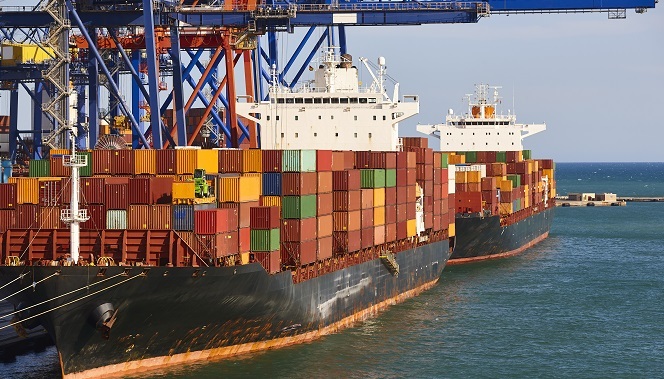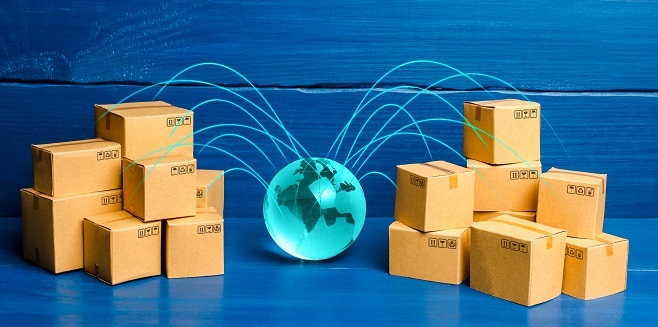
 Data Structure
Data Structure Networking
Networking RDBMS
RDBMS Operating System
Operating System Java
Java MS Excel
MS Excel iOS
iOS HTML
HTML CSS
CSS Android
Android Python
Python C Programming
C Programming C++
C++ C#
C# MongoDB
MongoDB MySQL
MySQL Javascript
Javascript PHP
PHP
- Selected Reading
- UPSC IAS Exams Notes
- Developer's Best Practices
- Questions and Answers
- Effective Resume Writing
- HR Interview Questions
- Computer Glossary
- Who is Who
What is the full form of FOB?
Introduction
Free On Board (FOB) is a shipping term used in international trade to specify who is in charge of the shipment's transportation as well as the location where ownership and risk of the products pass from the seller to the buyer.

FOB refers especially to the moment at which ownership of the goods transfers from the supplier to the buyer. When goods are purchased under FOB conditions, the seller is in charge of them right through the time they are placed on board the shipping vessel, at which point the buyer obtains ownership and responsibility.
FOB in International Trade
In international trade, the shipping phrase FOB (Free On Board) is often utilized to describe the responsibilities of the seller and the buyer for the shipment of goods. In FOB transactions, the seller is liable for all expenditures incurred up until the items are placed onto the vessel as well as for loading the goods onto the shipping vessel at the specified port. After the goods are loaded onto the ship, ownership and risk are transferred to the buyer, who is subsequently in charge of paying all expenses like insurance, shipping, and any import taxes.
The term FOB is often used when used with a specific port of shipping, such as FOB Shanghai or FOB New York, to express the specific boundary between the seller's and the buyer's responsibilities. The use of FOB terms in global trade is essential because it provides the responsibilities and liabilities of each party clear, decreasing the possibility of disputes and misunderstandings.
FOB Shipping Point vs. FOB Destination
Two distinct forms of the FOB shipping term FOB Shipping Point and FOB Destination each define a different point at which ownership and risk in the transportation of goods are transferred.
When goods are put onto a shipping vessel at the specified port of shipment, the seller's liability ends, this is referred to as FOB Shipping Point. The buyer now assumes ownership and risk and is in charge of paying all expenses and obligations related to moving the items from the port of shipping to their destination.
When the items are delivered to the buyer's selected destination, usually their warehouse or distribution centre, it is known as FOB Destination and the seller's liability ends at that point. The seller is in control of all expenditures incurred for transportation, insurance, and other expenses up until the products are delivered to the specified destination. The seller additionally retains ownership and risk of the goods until they are delivered to the destination.
Depending on the agreement between the buyer and seller and the specific factors of the transaction, one can choose between FOB Shipping Point and FOB Destination. In international trade, FOB Shipping Point is more frequently used since it offers more transparency and lowers the possibility of disagreements between the parties.
Advantages and Disadvantages of FOB
The Advantages of FOB consist of
Clear responsibility FOB defines the rights and responsibilities of the buyer and the seller in the shipping of goods in detail. This lowers the possibility of differences and misunderstandings between the parties to the transaction.
Lower costs Since the seller is only in charge of the products until they are placed aboard the shipping vessel, FOB might help the seller reduce costs. All costs of transportation, insurance, and any other expenses paid after that are the buyer's responsibility.
Flexibility FOB allows for flexibility of the moment at which ownership and risk are transferred in accordance with the specific needs of the buyer and the seller.

The Disadvantages of FOB consist of
Limited control The seller has limited authority over the products and the transportation process once they are loaded onto the shipping vessel. The buyer is liable for any loss or damage that happens during transportation.
Additional costs The cost of transporting the products from the port of shipment to the final location is entirely the responsibility of the buyer and could end up resulting in additional costs for the transaction.
Fraud risk FOB transactions are susceptible to fraud, particularly when the seller exaggerates the product's quality or quantity or fails to properly package or mark the products for shipment.
In summary, FOB has disadvantages in terms of management, additional costs, and the danger of fraud, however it can be helpful for lowering costs and clarifying the roles of the buyer and seller. When deciding whether to use FOB, specific requirements and information related to the transaction should be taken into consideration.
Conclusion
In conclusion, the international shipping term FOB (Free On Board) specifies the obligations and responsibilities of the buyer and seller in the shipment of products. The phrase FOB is frequently used when combined with a specific port of shipment, such as "FOB Shanghai" or "FOB New York," to show the exact distinction between the responsibilities of the seller and the buyer. Although FOB has advantages like clarity, lower costs, and flexibility, it also has disadvantages like limited management, additional expenses, and the possibility of fraud. When deciding whether to use FOB, specific requirements and information related to the transaction should be taken into consideration.
FAQs
Q1. When is FOB appropriate for use in international trade?
FOB should be used when the buyer and seller need to be specific about who is responsible for what during the movement of the goods.
Q2. Why is FOB important to international trade?
Because FOB provides the responsibilities and costs of the buyer and seller clearly, it lowers the possibility of disagreements and misunderstandings in international trade transactions.
Q3. What disadvantages are there for utilizing FOB in international trade?
FOB can expose the customer to fraud, limit the seller's capacity to regulate the products and the method for shipping, and increase the buyer's expenditures.

